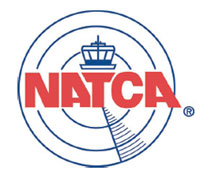Strongly Disputes NTSB Inference Of ATC Responsibility In
Hudson River Crash
 Air traffic controllers Monday have
strongly disputed what it says are misleading and - in one passage
- outright false parts of Friday's NTSB Hudson River mid-air crash
press release. NATCA says the report mistakenly and unfairly
assigns responsibility to a Teterboro, NJ, controller during the
pre-crash sequence of events that simply did not exist.
Air traffic controllers Monday have
strongly disputed what it says are misleading and - in one passage
- outright false parts of Friday's NTSB Hudson River mid-air crash
press release. NATCA says the report mistakenly and unfairly
assigns responsibility to a Teterboro, NJ, controller during the
pre-crash sequence of events that simply did not exist.
At issue are four words in the NTSB press release that wrongly
infer that the Teterboro controller could have warned the pilot of
the Piper aircraft about the helicopter over the Hudson River that
the aircraft eventually hit. The press release infers that at the
time the Teterboro controller told the aircraft to switch his
frequency to talk to Newark Tower controllers, there were several
aircraft detected by radar in the area immediately ahead of the
airplane, "including the accident helicopter." NATCA emphatically
declares that these four words are absolutely false and have
contributed to the reckless and mistaken conclusion that the
Teterboro controller could have prevented this crash.
The same NTSB press release clearly states that the helicopter
did not show on radar until 1152.27, seven seconds after
communication with the aircraft was switched from Teterboro to
Newark at 1152.20. But the poorly written and misleading passage
about the "accident helicopter" has left the mistaken impression
that the Teterboro controller was responsible for not warning the
aircraft about that traffic.
Furthermore, and equally disturbing, the NTSB privately revealed
to NATCA officials over the weekend that it knows that the four
words in question in its press release are "misleading and
inappropriate." A high-ranking NTSB official stated in an e-mail
that the wording "could have been clearer" but that a correction
"will not be issued."
 "We believe the NTSB is wrong to
infer there was a traffic advisory that could have been issued from
Teterboro Tower to the aircraft," said Ray Adams, NATCA Facility
Representative at Newark Tower who is representing the Teterboro
Tower controller in the NTSB crash investigation. "The helicopter
was not depicted on the radar prior to the switch of control from
Teterboro to Newark Tower. Teterboro had no opportunity to call
that traffic. The service of air traffic control is based on "known
and observed" traffic. The Teterboro controller had neither seen
nor known about the accident helicopter at the transfer of
communication to Newark.
"We believe the NTSB is wrong to
infer there was a traffic advisory that could have been issued from
Teterboro Tower to the aircraft," said Ray Adams, NATCA Facility
Representative at Newark Tower who is representing the Teterboro
Tower controller in the NTSB crash investigation. "The helicopter
was not depicted on the radar prior to the switch of control from
Teterboro to Newark Tower. Teterboro had no opportunity to call
that traffic. The service of air traffic control is based on "known
and observed" traffic. The Teterboro controller had neither seen
nor known about the accident helicopter at the transfer of
communication to Newark.
"Also, let's remember that the aircraft never made radio contact
with Newark, as Teterboro had requested. Nobody was talking to him.
You cannot issue traffic warnings to a pilot who is not
communicating with you. You have to reach the pilot first and the
Teterboro controller - as is accurately made clear in the NTSB
press release- tried twice, to no avail."
Added NATCA President Patrick Forrey: "Let me make this as clear
as I can: our air traffic controller at Teterboro did his job. We
believe he is not responsible for contributing to this tragic
accident and there is nothing he could have done to prevent it from
happening. We respect the NTSB and we value our participation in
NTSB investigations. But in this case, the NTSB has completely
ignored our input, painted an unrealistic view of the job
description of a Teterboro controller and fueled a public feeding
frenzy that unfairly blames this particular Teterboro controller
for not acting to stop the sequence of events that led to the
crash.
"We respectfully ask that the NTSB immediately act to stop this
rush to judgment that this controller had anything to do with the
crash until the Board's full investigation is complete. An
immediate correction of the flawed press release would be an
appropriate first step."
 Airborne 07.21.25: Nighthawk!, Hartzell Expands, Deltahawk 350HP!
Airborne 07.21.25: Nighthawk!, Hartzell Expands, Deltahawk 350HP! ANN's Daily Aero-Term (07.27.25): Estimated (EST)
ANN's Daily Aero-Term (07.27.25): Estimated (EST) ANN's Daily Aero-Linx (07.27.25)
ANN's Daily Aero-Linx (07.27.25) NTSB Final Report: Luce Buttercup
NTSB Final Report: Luce Buttercup Classic Aero-TV: 'That's All Brother'-Restoring a True Piece of Military History
Classic Aero-TV: 'That's All Brother'-Restoring a True Piece of Military History




